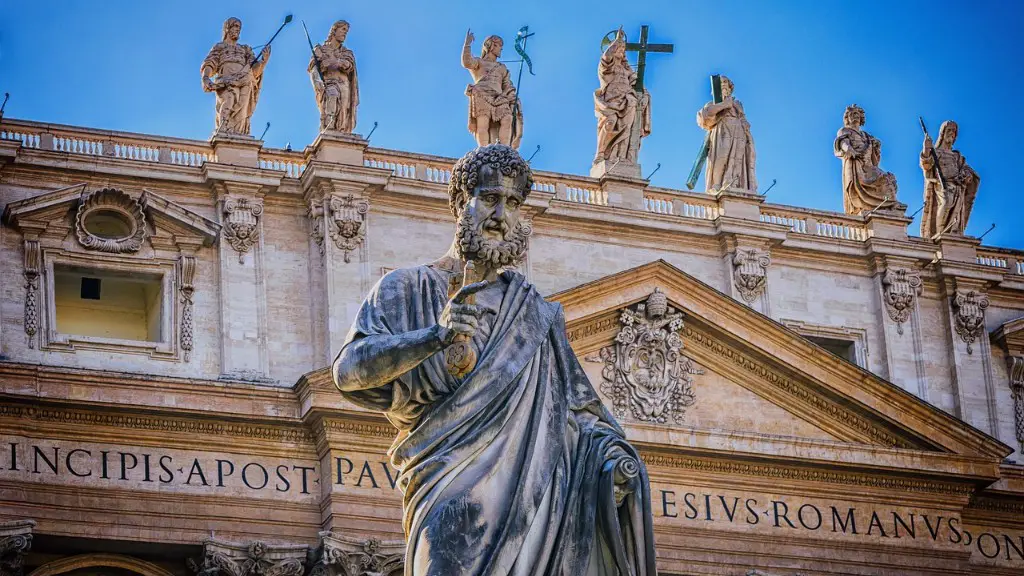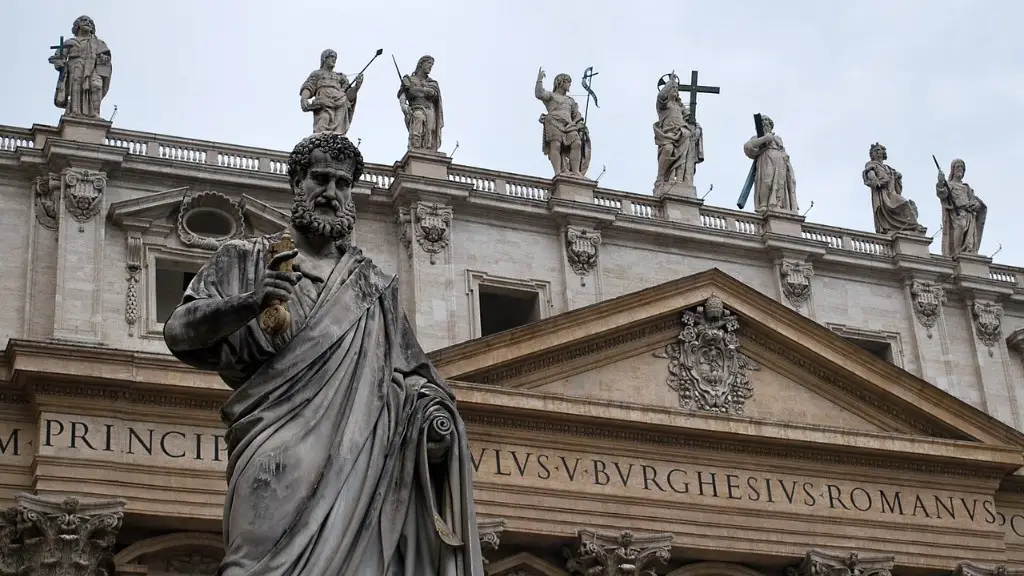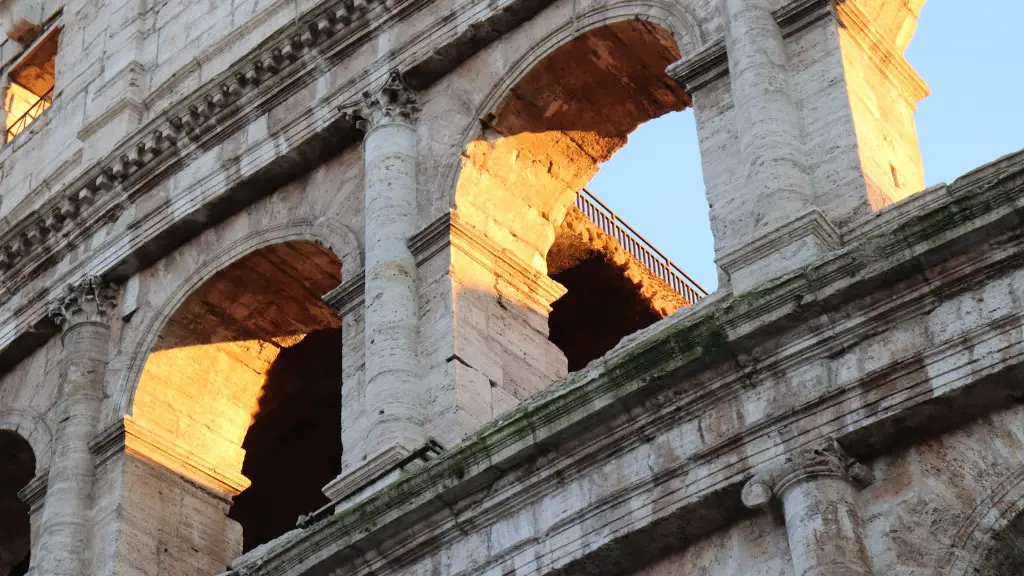The Colosseum of ancient Rome symbolizes the power and progress of the Roman Empire. It was built more than 2000 years ago and continues to be a major tourist attraction and cultural symbol. The Colosseum is a huge amphitheater, nearly 180 meters long and 156 meters wide. It has a total of 80 entrances and could seat as many as 50,000 people. It was once used to stage gladiatorial combats, animal hunts, and public spectacles. But, when was the Colosseum of Ancient Rome built?
The Colosseum was begun in 72 AD under the emperor Vespasian, one of the most important rulers of the Roman Empire. Vespasian started the construction of the Colosseum in order to strengthen his position in Rome, and to gain popular support. He claimed that the Colosseum was to be “a monument to the Roman people”. Vespasian also built other public works, such as the Temple of Peace. The Colosseum was then worked on by his successors, including the emperors Titus and Domitian, and was officially dedicated in 80 AD.
The Colosseum was the most ambitious construction project of its time, requiring a huge amount of resources, manpower and planning. The building was constructed of stone and concrete, making it one of the best-preserved structures of its kind. The stones were quarried in nearby areas, while the concrete used was a mixture of volcanic tuff, lime, and pozzolana. Hundreds of laborers, craftsmen, and artisans worked on the Colosseum, resulting in a highly elaborate and ornate building.
The Colosseum was a masterpiece of engineering. It featured elaborate design features, such as curved corridors for efficient entrances and exits, trap doors for animal exhibits, tiered seating for optimal viewing of the events, and awnings to protect spectators from the sun. The Colosseum also featured grand architecture, with Corinthian columns, statues of gods and goddesses, and sculptures of animals. It was a marvel of its time, and its architectural beauty remains today.
Though the Colosseum has stood the test of time and still serves as an iconic landmark in present day Rome, its original purpose and meaning has been long-forgotten. The Colosseum was built to entertain and amuse the Roman people, and it was used to stage gladiatorial combats, animal hunts and public spectacles. It was a form of tragic entertainment for the people, and it would have been a source of great joy and excitement for them. While the events that took place within its walls may have been gruesome and violent, the Colosseum stood as a symbol of the Roman Empire’s strength and progress.
Colosseum Throughout Time
The Colosseum endured the fall of the Roman Empire, and continued to serve different purposes throughout the centuries. The Colosseum was used as a quarry for building materials and was even used as a workshop for silk weavers at one point. In 1750, Pope Benedict XIV consecrated the Colosseum as a place of Christian pilgrimage, and it was used as a cemetery until the early 19th century. In the last two hundred years, the Colosseum has been restored and preserved, making it one of the grandest symbols of the Roman Empire. Even today, it is a popular attraction for visitors from all over the world.
The Colosseum has gone through many changes, but its magnificent architecture and grandiosity have remained same. Despite being damaged by storms and earthquakes throughout history, the Colosseum still stands as a symbol of the greatness and power of the Roman Empire. The story of its construction and its importance throughout time is nothing short of extraordinary.
Impact on Modern Culture
The impact of the Colosseum on modern culture is far-reaching. It is a symbol of the glory and power of the Roman Empire, and it has become a popular symbol of the culture in contemporary Europe. It is featured in films, paintings, and even on coins and stamps. The Colosseum is also a popular tourist destination, with millions of people visiting it every year. It serves as a reminder of the grandeur of the Roman Empire, and its influence can be felt all over the world.
The Colosseum is also a symbol of unity. It stands as a reminder of the power of the people and the strength of their collective identity. Despite its violent history and the tragedies that have taken place within its walls, the Colosseum remains a symbol of hope and progress. It has served as a source of inspiration for artists, scholars, and citizens alike, and it continues to bring people together from across Europe and around the world.
Significance of the Colosseum
The Colosseum is an important structure both in the history of the Roman Empire, and in the modern world. It has come to symbolize the grandeur of the empire, and it stands as a reminder of the power of the people. It has hosted important events and been witness to tragedies, and it has endured the test of time and continues to serve as a major tourist attraction. The Colosseum’s fascinating history and its architectural beauty make it a remarkable structure, and a symbol of hope and progress.
The Colosseum Today
The Colosseum has survived through the centuries, and still stands as a symbol of the power of the Roman Empire. Today, it is a major tourist attraction and a source of pride for the people of Rome. It has been restored and preserved, and continues to stand as a grand landmark. Accounts from tourists and art historians who visit the Colosseum testify of its grandeur, and of the sense of awe and admiration it evokes. It is a testament to the greatness of the Roman Empire, and the strength of the people.
The Colosseum’s Impact on Architecture
The Colosseum has had a tremendous impact on modern architecture. Its grandeur and beauty have inspired architects and builders throughout the centuries. Its design and capacity were revolutionary for its time, and many of its features have been adopted in the design of other amphitheaters and arenas throughout the world. Its influence is still felt in modern day architecture, and its grandiosity has been replicated in many other structures.
The Colosseum’s Cultural Importance
The Colosseum has come to symbolize the Roman Empire, and it stands as a reminder of its grandeur. It is a cultural symbol that unites people from across Europe and around the world, and it has served as a source of inspiration for both tourists and citizens alike. It is an iconic landmark, and its presence serves to remind people of the power of the Roman Empire and its impact on the modern world.



